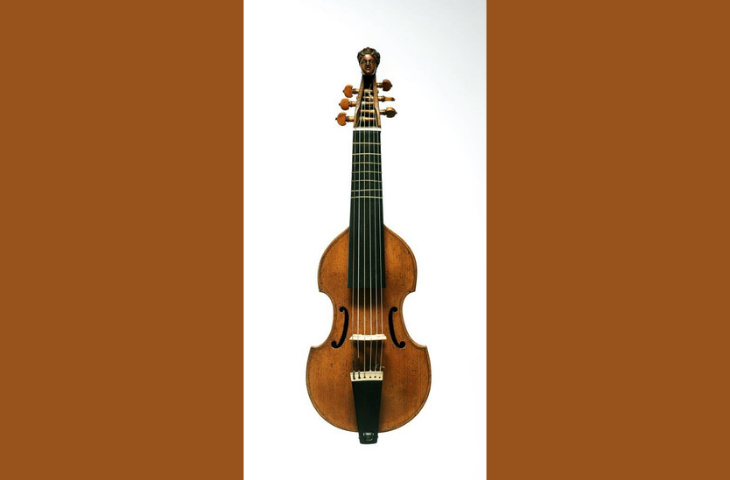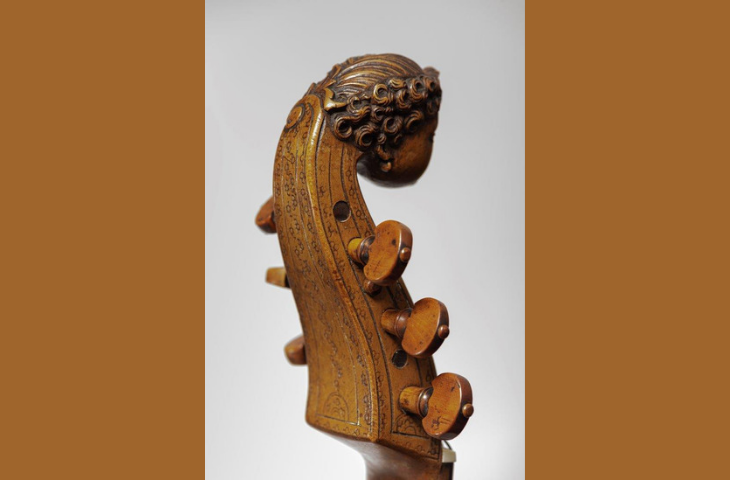March 2024
Fig.1

Pardessus de viole, Pierre Saint-Paul, Paris, 1742, inv. 1395
Fig.2

Pardessus de viole (detail), Pierre Saint-Paul, Paris, 1742, inv. 1395
The pardessus de viole (Fig.1) is a bowed stringed instrument about the size of a violin, which is played on the knees rather than on the shoulder. It is the smallest member of the viola da gamba family of instruments. It has six strings, sound-holes in the shape of C’s, and movable frets. The peg box ends in a carved head (Fig.2), a common characteristic of this type of instrument.
Inside the body of the instrument is a label which reads: Pierre Saint-Paul rue Saint, André des Arts à Paris 1742
The pardessus was invented around 1700. It was particularly popular in France during the first half of the 18th century before gradually become relegated to being a replacement for the violin for women and amateurs for whom the technique of that instrument was too challenging. It was no longer in use by the end of the 18th century.
The pardessus by Pierre Saint-Paul has a particular importance for the MIM. It came from the private collection of the family of Victor-Charles Mahillon, the first curator of what was at that time called the Musée instrumental of the Brussels Conservatoire. The instrument became the property of the museum in 1883, but a century later, in 1980, it was stolen while being exhibited in the museum at the Petit Sablon. In an unexpected manner, the pardessus was returned to the museum in 2022 by a musician who had acquired it and quickly realized that it had been stolen from the Belgian State.
To celebrate the return of this precious object, the MIM will organize on 16 March 2024 a concert with musician Annalisa Pappano. At the same time, the instrument will be displayed again in the museum’s galleries.